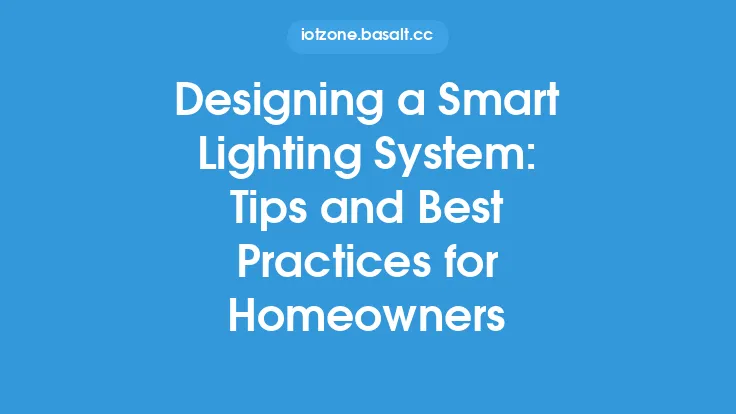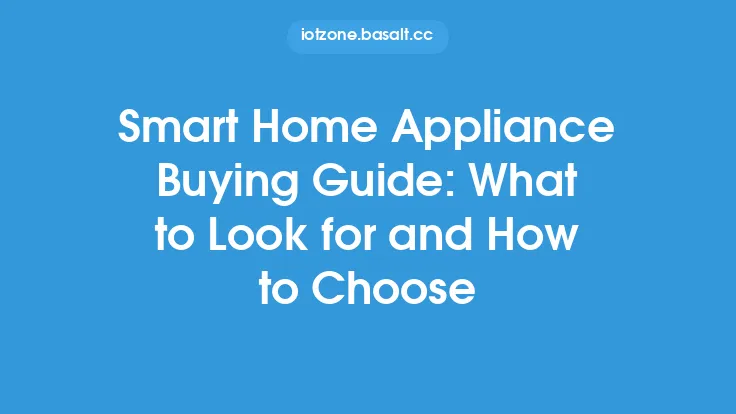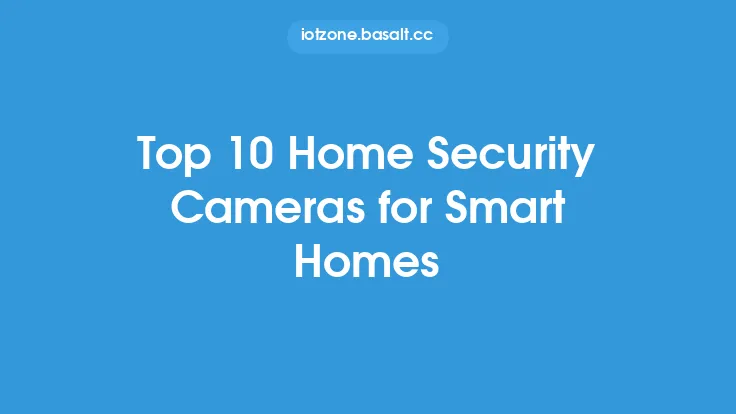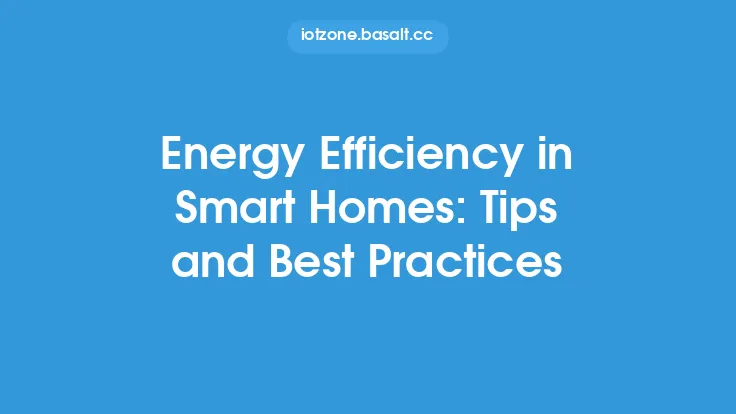As a homeowner, securing your smart home is crucial to protect your family, belongings, and personal data from potential threats. With the increasing number of connected devices in your home, the risk of cyber attacks and unauthorized access also increases. In this article, we will provide you with tips and tricks to secure your smart home, ensuring that your devices and data are safe and protected.
Understanding Smart Home Security Risks
Smart home devices, such as thermostats, lights, security cameras, and door locks, are connected to the internet, making them vulnerable to cyber attacks. Hackers can exploit weaknesses in these devices to gain access to your home network, steal sensitive information, or even take control of your devices. Some common smart home security risks include:
- Unsecured devices: Devices with default or weak passwords, or those that are not regularly updated, can be easily compromised by hackers.
- Unencrypted data: Data transmitted between devices or to the cloud may not be encrypted, making it accessible to unauthorized parties.
- Insecure networks: Home networks with weak passwords or unsecured Wi-Fi connections can be vulnerable to hacking.
- Outdated software: Devices with outdated software or firmware may have known vulnerabilities that can be exploited by hackers.
Securing Your Smart Home Network
To secure your smart home, it's essential to start with your home network. Here are some tips to help you secure your network:
- Change default passwords: Change the default passwords for your router, modem, and other network devices to strong, unique passwords.
- Use WPA2 encryption: Ensure that your Wi-Fi network is using WPA2 encryption, which is the most secure encryption protocol currently available.
- Set up a guest network: Create a separate guest network for visitors to use, which will help keep your main network secure.
- Use a firewall: Enable the firewall on your router and ensure that it's configured to block incoming and outgoing traffic.
- Regularly update firmware: Regularly update the firmware on your router and other network devices to ensure that you have the latest security patches.
Securing Your Smart Home Devices
In addition to securing your network, it's also essential to secure your smart home devices. Here are some tips to help you do so:
- Change default passwords: Change the default passwords for your smart home devices, such as security cameras, thermostats, and door locks, to strong, unique passwords.
- Use two-factor authentication: Enable two-factor authentication on your devices, which requires both a password and a second form of verification, such as a code sent to your phone.
- Keep software up-to-date: Regularly update the software and firmware on your devices to ensure that you have the latest security patches.
- Use encryption: Ensure that data transmitted between devices or to the cloud is encrypted, using protocols such as SSL/TLS.
- Monitor device activity: Regularly monitor the activity of your devices, looking for any suspicious behavior or unauthorized access.
Implementing Additional Security Measures
In addition to securing your network and devices, there are several additional security measures you can implement to further protect your smart home. These include:
- Installing a network security camera: A network security camera can help you monitor your home network and detect any potential security threats.
- Using a smart home security system: A smart home security system can provide an additional layer of protection, alerting you to potential security threats and providing automated responses to incidents.
- Implementing a VPN: A virtual private network (VPN) can help encrypt internet traffic, protecting your data from interception and eavesdropping.
- Using a security-focused smart home hub: A security-focused smart home hub can help you monitor and control your devices, providing an additional layer of security and protection.
Best Practices for Smart Home Security
To ensure the security of your smart home, it's essential to follow best practices for smart home security. These include:
- Regularly updating software and firmware: Regularly update the software and firmware on your devices and network equipment to ensure that you have the latest security patches.
- Using strong passwords: Use strong, unique passwords for all devices and accounts, and consider using a password manager to help you keep track of them.
- Monitoring device activity: Regularly monitor the activity of your devices, looking for any suspicious behavior or unauthorized access.
- Implementing two-factor authentication: Enable two-factor authentication on your devices and accounts, which requires both a password and a second form of verification.
- Being cautious with public Wi-Fi: Avoid using public Wi-Fi networks to access your smart home devices or accounts, as these networks may not be secure.
Conclusion
Securing your smart home requires a combination of technical knowledge, best practices, and common sense. By understanding the risks associated with smart home devices, securing your network and devices, implementing additional security measures, and following best practices, you can help protect your home, family, and personal data from potential threats. Remember to stay vigilant and continually monitor your smart home for any potential security threats, and take action quickly if you suspect that your home has been compromised. With the right knowledge and precautions, you can enjoy the benefits of smart home technology while minimizing the risks.





